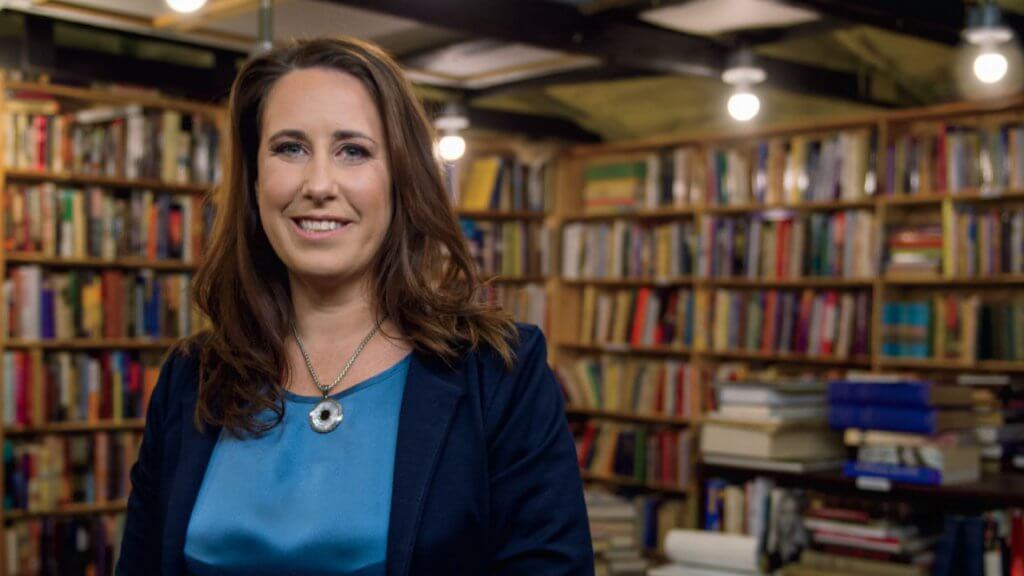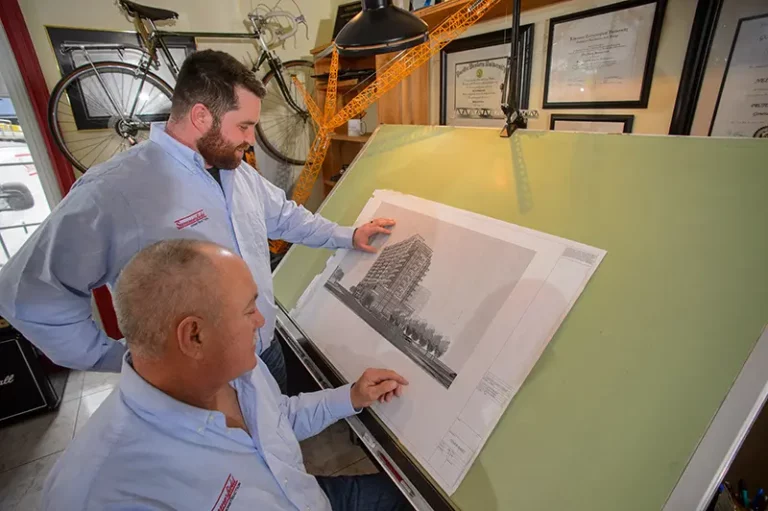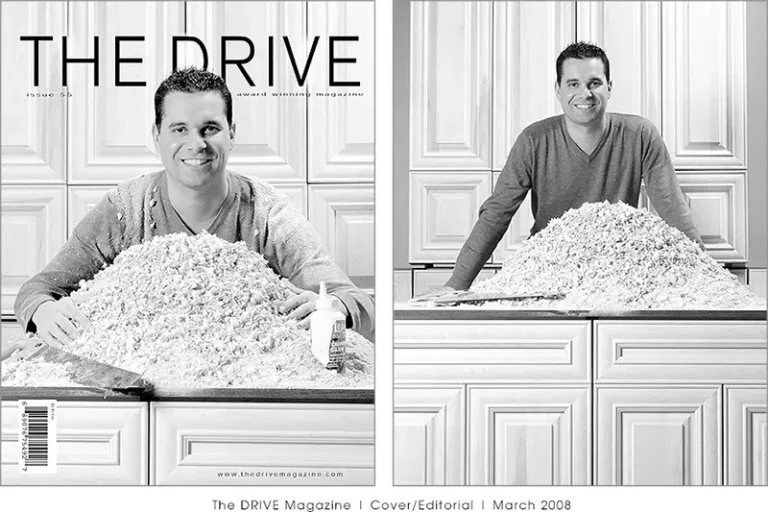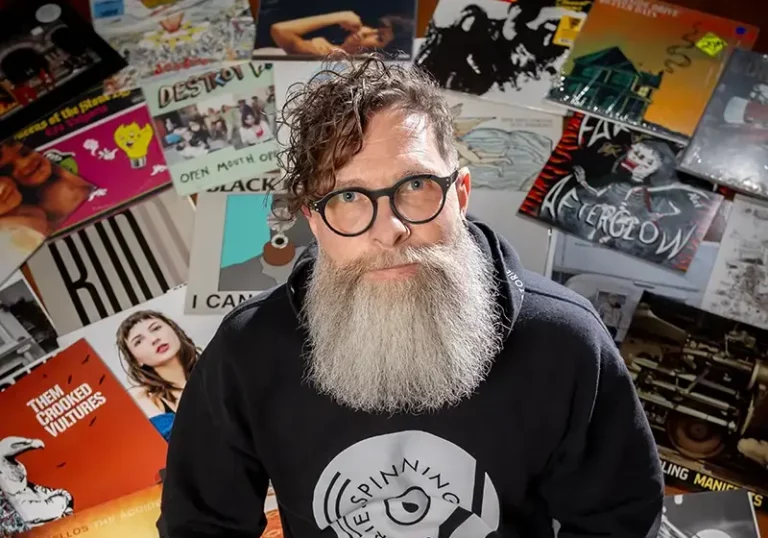Jenn Sadai seems happy.
It’s a calm Saturday morning, and one of Windsor’s busiest writers is perched attentively on the corner sofa in her Walkerville living room. Everything appears to be in its right place in the lovely, ordinary home, which she shares with her husband of 12 years and their two black labs: Thunder and Brewin.
A self-described “crazy dreamer,” Sadai is a remarkably prolific author. Since 2014, she’s written and published five books, all of which are currently available as trade paperback and eBooks from Amazon and Indigo
Sadai’s oeuvre spans genres and often resists categorization, but the author herself often divides the works into informal “series”: self-esteem-focused non-fiction and “The Survivor Series” of novels. All of the works are relatively slight volumes with simple, stock-photo covers and idiomatic titles. Superficially, they’re brisk, easy reads, but their approachability often masks a heart of darkness.
Refreshingly, “Author Jenn Sadai” makes conversation notable for its surprising lack of pretension. In person, Sadai is warm and personable, but frequently deferential or even bashful. “Grateful” is probably the best word.
You can imagine that once upon a time, things would have been different.
Sadai debuted with the memoir Dark Confessions of an Extraordinary, Ordinary Woman in 2014. The incredibly honest book traces its author’s knotty path out of violence, crime, and addiction
Here as elsewhere, Sadai writes in clean, tidy prose, largely free of affect and punctuated with a number of vivid details and achingly specific memories. Nakedly, almost shockingly confessional, Sadai’s snappy, declarative sentences are typically organized into short, neat passages marshalled in unconventional bursts by italicized single-sentence paragraphs.
The book chronicles Sadai’s parents’ divorce; her upbringing by an immature, emotionally absent, and overworked young mother and her abusive, obnoxious partner; a free-range childhood that saw her dipping into her father’s alcohol cabinet by age 11; a preteen friend’s alcohol-poisoned convulsing fit; flirtations with low-level drug dealing; two close brushes with guns; and the birth of a longstanding cannabis addiction—all before the protagonist’s 17th birthday
It gets darker, still.
We witness two suicide notes; a bout with severe hyperthyroidism portending Graves’ disease and congestive heart failure; a problematic relationship with food and body shaming in light of wild weight fluctuations; and several long, contemplative treks down Riverside Drive. At one stage, the narrator’s heart stops in a Las Vegas hotel room.
Much of the book catalogues a confidence-shattering seven-year tryst with “Shane,” a mentally ill addict and abuser wrought with paranoia and delusions of grandeur. The reader endures episodes of escalating domestic violence bordering on attempted murder. Since 2003, Sadai has been entirely free of him, save for passing him at a bus stop, like a lingering ghost from her past.
We’re getting ahead of ourselves, though. Sadai didn’t become a published author until well into her fourth decade of life. Then, in 2012, she took a leap of faith
“I was totally not pursuing writing and hadn’t written in years,” relates Sadai, who estimates she was putting in 60 or 70 hours a week at the time working a handful of sales and hospitality jobs. “My uncle was diagnosed with leukemia. The first day I went to go see him in the hospital, I asked about what was going on with him, but he kept turning it back on me: Why are you so stressed with your job? You’re supposed to be a writer. Why are you doing this?
“I quit my job the next day.”
Writing had been at the back of Sadai’s mind since childhood. By grade eight, she had been invited to attend an exclusive writer’s workshop with a local author; the experience produced a short story, which was put in print and catalogued in the local library system. “I don’t know if it was maybe an innate gift that I had, but writing was important to me, and something that I excelled at,” she relates. “At a very young age, grade three or four, I remember writing a poem that a teacher put on the wall. And when you feel that you do something well, you want to pursue it.”
Sadai initially turned to Elance, an online staffing platform that facilitated connections between businesses with specific needs and freelance contractors. “I had used it a year and a half prior to make a little side money doing copywriting,” she explains. “When my uncle inspired me to do this, I went online and bid on 12 jobs. By the next morning, I’d landed six. And by the next day, I had two more. So, I had some work pending, and thought ‘this is what I’ll do.’”
At the same time, Sadai was engrossed by Elizabeth Gilbert’s memoir Committed. “It reminded me of my own story—what I went through and how that could possibly help others,” she relates. “I got the idea that I wanted to tell my story, and it snowballed.”
Snowballs don’t always roll easily, though; it’s important not to elide Sadai’s hard graft. In a world where almost anybody can put their name on a softcover, being an author is harder work than ever. For entrepreneurial, workaday writers like Sadai, bookselling is all about the hustle.
Not coincidentally, Sadai has a background in buying and selling. She studied business marketing at St. Clair College and worked in advertising for a spell. In that world, her success as a copywriter led to success in the sales world—a regrettably more lucrative line of work. She’s also spent some time as the food and beverage manager for a golf course. Currently, during the day, she’s an industrial buyer for an industrial distribution company.
Starting with her debut, Sadai has enjoyed what she calls a “blended publishing” arrangement with Little Creek Books, an imprint of the small Tennessee-based press Jan-Carol Publishing. The humble woman-run publishing house specializes in stories of female empowerment.
It’s fair to say it would be nigh impossible for Sadai to do what she does without the marketing muscle afforded by an online presence that spreads out across Twitter, Facebook, Instagram, Pinterest, Goodreads, and even YouTube, where her “flawed fitness” series is building momentum.
“You’ve got to constantly put yourself out there,” she stresses, “because selling books is not easy. I’d be lost without social media.”
Today, about 80 per cent of her sales are in the U.S., and she has a loyal local following, but Sadai’s prose has flown as far afield as Australia and China. Her 4.68-star average on Goodreads, across 130 reviews, is legitimately impressive by any standard.
While her books are available at Storytellers Book Store on Ottawa Street and Indigo in Lakeshore, much of her local sales are mediated the old-fashioned way. To this day, Sadai keeps a few boxes of paperbacks in the trunk of her car. She has some deliveries scheduled after our interview.
In 2015, one year after her first book, Sadai penned and published Dirty Secrets of the World’s Worst Employee. Another memoir, it traces the years before Sadai found writing. “It delves into the many mistakes I’ve made, the countless challenges I’ve faced along the way, and the priceless lessons I learned,” says the author.
In 2016, Sadai continued to write from her experience with Cottage Cheese Thighs, a self-help study in body positivity with a large helping of autobiography.
The 2017 novel Her Own Hero represents Sadai’s first foray into fiction. The book tells the story of a down-on-her-luck showgirl who becomes embroiled in a torrid relationship with a Spanish stranger who is not quite what he seems.
No Kids Required, released earlier this year, is a non-narrative self-help volume that profiles 20 women who’ve chosen not to have children—including some of the author’s friends and family members. It’s marketed as “an honest and insightful story about respecting one another’s choices and living life on your terms.”
Sadai hopes to have a completed manuscript for her next book, Her Beauty Burns, ready for editing by the time you read this. Assuming a typical two-month turnaround time, it should hit shelves in February. Her sixth volume, it marks a return to the fictional world assembled for Her Own Hero. “It’s more of a psychological thriller,” notes Sadai. “It follows the character Kaitlyn; the only thing we know about her is that she has scars from a fire. So now I’m writing her entire journey, from high school. I’ve had to create this entire character, this life.”
A lifelong reader, Sadai cites among her influences Elizabeth Gilbert, the American author best known for the wildly successful 2006 memoir Eat, Pray, Love. “I tend to read a lot of crazy memoirs,” she explains. “I like finding books from lesser-known authors and exploring the challenges that they overcame—things that are going to make me pumped up to write similar stuff.”
In one way or another, all of Sadai’s writing investigates female empowerment. Much of it takes on a certain new resonance in a post-#metoo world.
“As women, we are inside our heads a lot,” Sadai reasons. “We have these doubts, these insecurities, and we second-guess ourselves. We have so much going on inside that makes us hesitant and slows us down. What I’ve done with my books is taken all those thoughts from my head and put them on paper. There’s nothing wrong with you for having doubts and insecurities. Let’s overcome them and move forward. The goal is not to silence those thoughts but learning how to proceed in spite of them. I think an empowered woman is one who, despite all those things going on inside her head, still has the courage and confidence to act.”
Since releasing her life’s story into the world, Sadai’s noticed it’s a lot more ordinary than she once might have expected. She’s received correspondence from well over 100 readers—the vast majority of them women—hoping to share their similar stories with a sympathetic soul
To the best of her ability, Sadai encourages them to seek conversations and connect with community resources. “I try to show them life can be so much better,” she stresses. “I use myself as an example. If I knew that this life was possible back then, it would have been so much easier to fight on and continue. I try to give them hope.”
While this guidance from a distance is often invaluable, some readers inevitably fade back out into the wider world; the emails dry up, the stories unresolved. “That used to upset me a lot, if somebody stopped responding,” says Sadai, “but I’ve had to learn to be okay and to simply hope she’s safe; I can’t get so emotionally invested in every person who messages me.”
While her mother struggled somewhat to come to terms with the release of the first book, the response from Sadai’s friends and family was, eventually, positive. “Over time, the book actually opened up a lot of dialogue I didn’t expect,” recalls Sadai. “Even some family members and close friends I’d known my whole life reached out to me because they were going through something similar to my experiences. I had no idea. I didn’t find that people were judgemental or embarrassed by the things I shared. It opened up conversations that I think were necessary. The first book introduced me to a whole survivor community. I made a whole new group of friends and essentially gained an advocacy network.”
Part of writing is advocating for oneself. At one evocative point in her first book, Sadai pulls into a parking lot, having fled the scene of an attack, to write poetry. Then, as now, writing comes to represent the best available form of therapy.
“I think the books have helped me more than anybody else,” she shares. “I used to have a lot of nightmares, flashbacks, and paranoia about the past, but I can’t remember the last time I freaked out the way I used to. It’s kind of like I needed to get it all out there, and writing was my way of letting it go. A lot of that stuff doesn’t bother me at all anymore. And that’s what I hope it does for other people too.
“There were definitely some harder sections to write, which brought out some memories,” she recalls. “My technique for the really hard parts was to start with bullet points. I would just jot down the facts of what happened, and slowly, when I’d be editing through, I’d start forming them into sentences. And the next time I’d kind of build it more. So, it grew slowly into it, so I wasn’t deep into the moment.”
Sadai’s writing process, in general, is as deliberate as it is successful. She doesn’t really do writer’s block.
“I do set deadlines for myself, but I’m very fortunate,” she acknowledges. “I’ve never even known where the inspiration comes from; I start writing, and it just goes.”
That said, finding time for this spontaneous outpouring can still be tough. Sadai authored her first book, and about half of her second, while on something of a self-created sabbatical from work, but she no longer enjoys the luxury of writing during business hours.
“I make time for downtime,” she articulates. “I’m very persistent about that, because I have to be very disciplined. The first 10 years my husband and I were together, before I started writing, the kids were here 24/7, and it was chaos,” recalls Sadai, whose husband brought four children, all of whom are now over 18, into her life. “You learn to juggle a million things at once.”
While the current phase of Sadai’s life appears calmer, certainly, it still manages to skirt conventionality: at 39, she is an empty nester
At the end of the workweek, Sadai now enjoys what she calls “Friday Night Writes”: while her husband is out of the house on a regular bowling date with his mother, she seizes the opportunity to bang out a few pages.
She also tries to fit in a couple hours of composition after her Saturday morning coffee. On Sundays, she steals a moment or two in the afternoon to retreat into her mind on her backyard patio, or, in the colder months, in the living room recliner I’m currently occupying. “I have an official-looking writing studio upstairs, but it’s more of a hard chair,” she laughs. “I like to be comfy.”
Sadai expects to be more comfortable in the future. As you’d expect, she has a plan. Still in her thirties, she intends to maintain her current book-a-year pace until her 50th birthday. “By that point, I retire from my day job and I pursue this full time,” she shares. “I’m working with an investor and everything so I will have a nice nest egg. Then, maybe two books a year!”
This is not hyperbole. Sadai insists she’s already begun book seven in earnest, and she has working sketches for her eighth, ninth, tenth, eleventh, and twelfth volumes.
Her next nonfiction volume, book seven, will be titled Women Ready to Rise. Sadai plans on profiling well over 20 women from around the English-speaking world, each of whom has survived a physically or emotionally trying challenge. So far, the nascent volume’s subjects include a gun violence survivor and gun safety advocate and a young woman living with multiple sclerosis.
To me, also a sort of writer, the self-belief such a pursuit must require is remarkable. But Sadai’s outward strength does conceal some amount of writerly self-torment; she is an author, after all. “I have doubts before each new book comes out, even when I know that the one before did well,” she reveals. “I think I call myself ‘extraordinary, ordinary’ because I didn’t ever really think that my story was unique or would be successful. It’s growing that way, I think, because it’s so relatable. It is unfortunately very common that people go through experiences like I have. I realize even more so now that the books are out that this is a sad reality for young women—and young men.”
When Sadai isn’t writing, you can often find her running, but no longer from anything
In 2009, Sadai was 50 pounds overweight and in the throes of a half-pack-a-day cigarette habit. Within six months, she crossed the finish line of her first half-marathon 20 pounds lighter and smoke-free. One year later, she’d worked her way up to a full marathon, shedding 20 more pounds in the process. “That started building my confidence level,” recalls Sadai, who continues to keep fit by running and playing floor hockey, both of which help to offset her enthusiast’s interest in craft beer. “That feeling of doing something that’s so challenging, that so few people have done. It was also about getting healthy and feeling better about myself.”
She could easily be talking about writing; such is the unique sort of delayed gratification and very specific relationship between pain and pleasure with which every author and runner is all too familiar.
“When you’re putting in all that work, training, and effort,” muses Sadai, “you never really have any idea whether you’ll be successful. You have to believe in what you’re doing and want it badly enough to follow through and make sure you’re successful.
“That finish line is not a guarantee.”
@jennsadai



